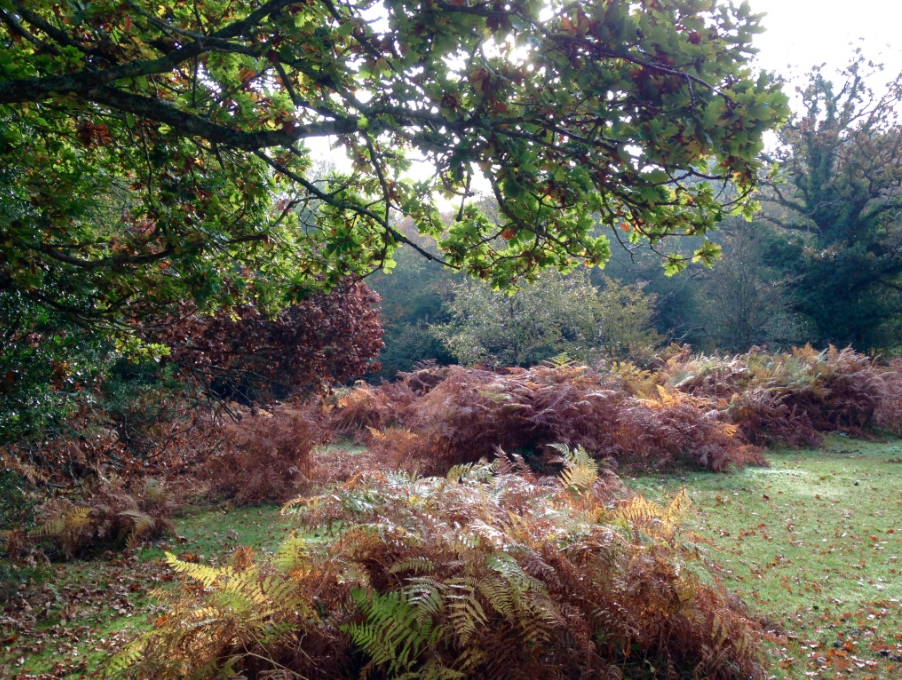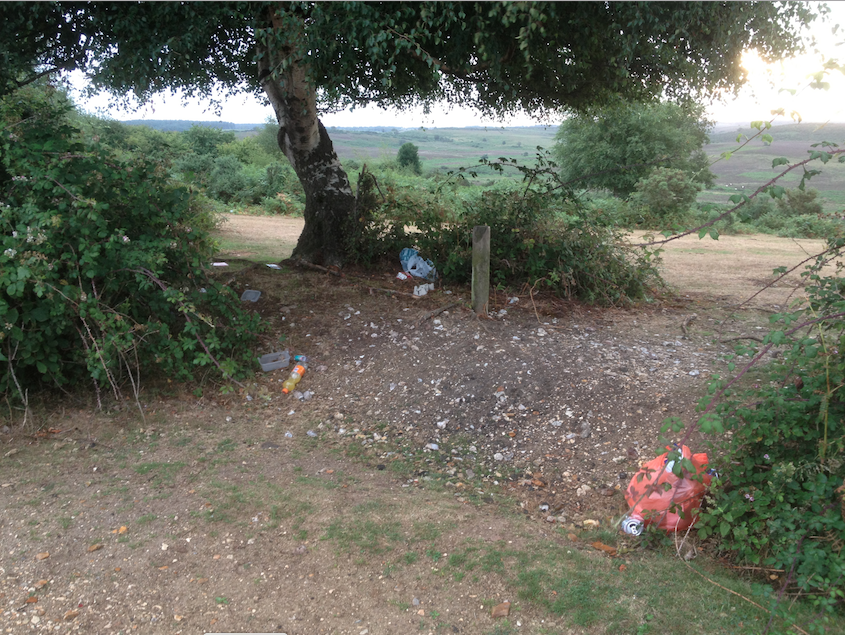
Late autumn in the New Forest is filled with colour and leaf-litter covers the ground.
This week I’ve had the subject of litter on my mind. Looking at the amazing colours of the New Forest’s autumn foliage made me think of the leaf-litter that covers the forest floor. It carpets the ground with a profusion of amber, gold and russet colours that provide a most satisfactory scrunching, rustling sound when walked upon. The leaves change colour due to changes in the amount of sunlight and decreasing temperatures, which cause their chlorophyll levels to break down. It is the chlorophyll (an important biomolecule) that makes leaves green but in its absence other pigments, such as yellows and reds, are revealed. Eventually the leaves will be ejected by the tree, which will then seal the places they were attached to, in order to conserve energy during the winter. Earliest mentions of the word ‘litter’ are in association with a bed-like form of transport carried at shoulder height. From then on fallen leaves collected for bedding would have been regarded as litter material, and once strewn onto a floor as a form of covering would simply be referred to as litter. It is from this association, with the manner of scattering in a disorderly way, that the modern understanding of the word ‘litter’ comes from.
Despoiling the landscape and the skies
Just as the trees discard the leaves that no longer serve a purpose, so some people will abandon the food containers, confectionary wrappers and drink bottles, for example, they no longer need . However, unlike the trees, which cast off biodegradable material that is recycled by the forest flora and fauna, items rejected by humans have no place in nature. I’m not sure if it’s a consequence of the recent half term but my walks in the New Forest of late have become litter forages. I seem to have collected more litter in this past week than in the whole of the month beforehand! I’ve also noticed that there are a profusion of out-of-date posters pinned to trees, lamp-posts and telegraph poles calling for the return of missing dogs that have long since been reunited with their loving owners; and Cat, it seems, celebrated her 30th birthday for a least a couple of weeks on a sheet strung across a busy road bridge. Nevertheless, to my mind possibly the worse type of litter that humankind is responsible for is not the type that initially despoils our landscape but our skies. Sky lanterns or Chinese lanterns, call them what you will, are the scourge of the countryside and its wildlife. With the season of the firework and bonfire upon us these dangerous floating incendiaries are often released into the atmosphere where they drift aimlessly, until they disintegrate or land, posing a potential threat to our wildlife and rural habitats greater than many other forms of litter. So, when out and about in the New Forest, be a friend to its wildlife and habitat and don’t leave litter – either on the ground or in its skies.

Be a friend to the New Forest and take your litter away with you.


You must be logged in to post a comment.